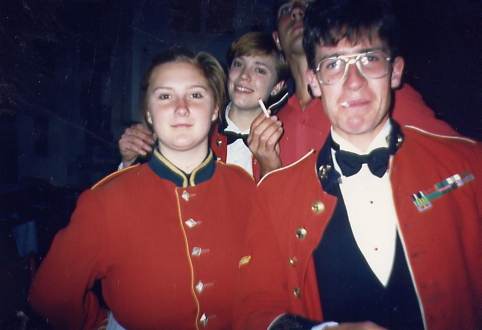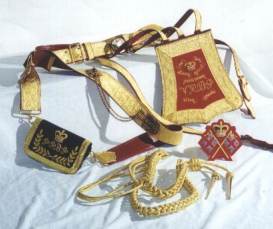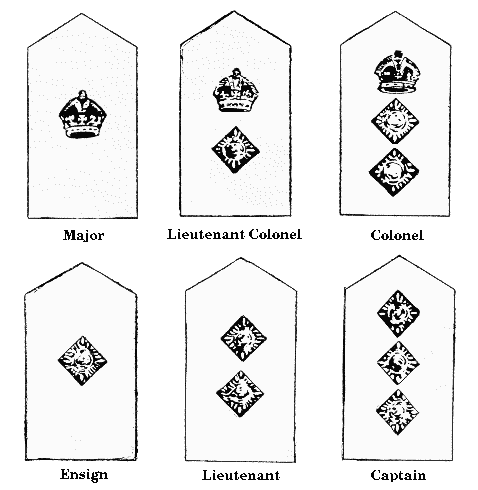
 |
INTRODUCTION |  |
 |
BELIEFS |  |
 |
PACIFIST WARFARE |  |
 |
STYLE & STRUCTURE |  |
 |
NURSING CORPS |  |
 |
CONTACTS |  |
 |
ENEMIES |  |
 |
GALLERY |  |
 |
AUTHORS |  |
ALF's Imperial Army - the Look and the Feel
The look, proper; the feel, stiff and scratchy.
Alf"s Imperial Army Nurses wear black skirts, and black or white blouses: also, white aprons, red capes, solar topees or white headscarves.
The soldier's basic uniform consists of:
|
|
There are regional differences in uniform. In Dunedin, tartan trews are worn rather than striped trousers, and cuffs are gauntlet-pattern with green rather than blue (Oamaru's Whitestone Grenadiers) or black (Canterbury Light Infantry) or buff (Waikato Dragoons). Different regiments may affect other headgear besides pith helmets when not in the desert sun; such as pillboxes, glengarries or forage caps.

Members of the Third and First Regiments. Note the different coloured facings
These uniforms are not usually owned by the recruit but by the regiment. Some people may wish to buy their own uniform and kit - for obvious advantages of fit and availability.
It is desirable that boots are to be provided by each recruit, and that they are black, preferably without yellow stitching, and ideally, hobnailed (rubber soles are acceptable).
ALF's Imperial Army Structure and Ranks
ALF's Imperial Army is headed by Christianity's most annoying and only Anglican prophet, Jack, the Archwizard of New Zealand. Below the Wizard are the senior officers of General Staff, then junior officers, NCOs, and privates. Below even the privates are the recruits.

|
Normally, every chap and nurse enters the Army as a recruit. Nurse recruits are protected by their status as ladies. Recruit chaps however, are the lowest of the low. They can expect to be addressed as 'boy' or 'you there' - if they are lucky. They may be called upon to polish officers' boots, make weapons, undergo P.T, fetch wood and draw water under the most humiliating of conditions. This is to build their character, inure them to the jeers of the public, and indulge the lusts for power of N.C.O.s and officers.
N.C.O.s (non-commissioned officers) comprise lance-corporals, corporals, sergeants, colour-sergeants, company sergeants-major and regimental sergeants-major (in that order of rank.) Commitment, skill and good-naturedness can result in promotion through the ranks from recruit to a non-commissioned and possibly even a commissioned officer.
There is no expectation placed on N.C.O.s to be gentlemanly and urbane. Their character is that of the man who has come from the rank and file, historically the preserve of the lower classes. They have a strong tradition of cruelty towards those who were once their fellows in the "other ranks". They are usually entrusted with the inglorious tasks involved in keeping the army in the field (on campaign). They stand over recruits and make them peel potatoes, for instance. They may also lead detatchments in battle under the direction of officers. Sergeants and full corporals see to drill instruction and physical training, and administer discipline on behalf of the officers who do not dirty their hands by physically touching the troops.

Commissioned Officers' ranks, bottom left to top right
Commissioned officers give orders to N.C.O.s, and command in battles. The character of the officer is always refined and gentlemanly, regardless of whether this status is acquired by something as vulgar as work and learning, or by birth. Secure in their superiority, they are hardly ever cruel to other ranks. They have the exquisite luxury of being cruel to N.C.O.s.
